Broadway Bridge Shared-Use Sidepath
The new Broadway Bridge has a convenient, low-stress access for bicyclists and pedestrians! It has a separated 16-foot wide BikePed shared use path on its east side (Fig. 1-3). On the bridge itself, the BikePed path is separated from vehicular traffic by a concrete wall (Fig. 1, 2, and 4, Cross Section B). Bicyclists and pedestrians will be able to access the bridge from the street or from the Arkansas River Trail.
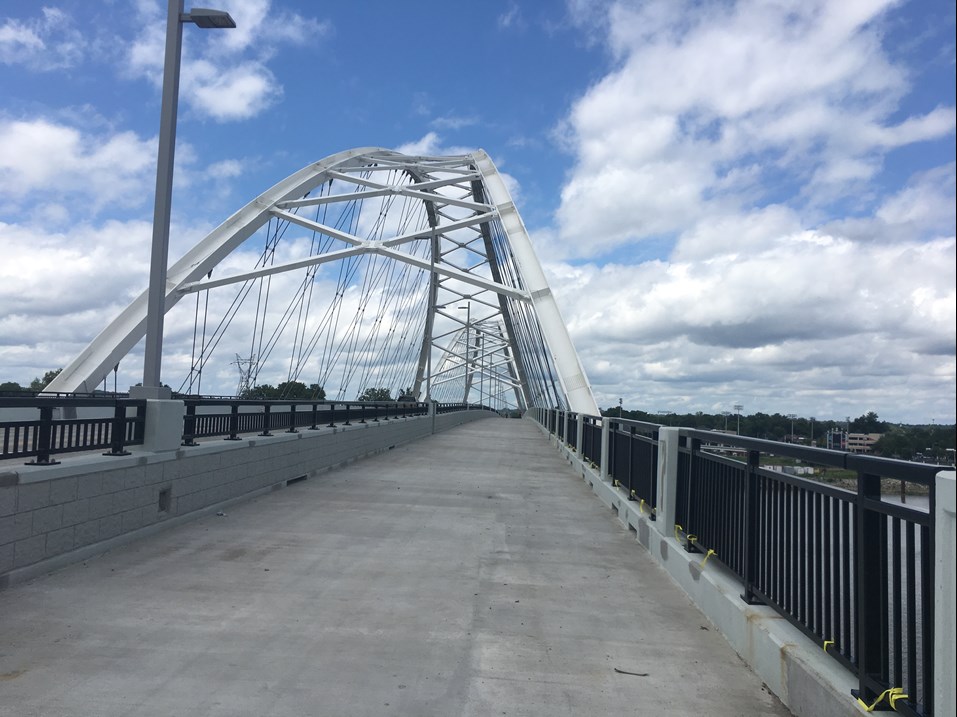
Figure 1. The pedestrian and bicycle facility on the the Broadway Bridge is 16 ft. wide. Plenty of room for a shared use facility.
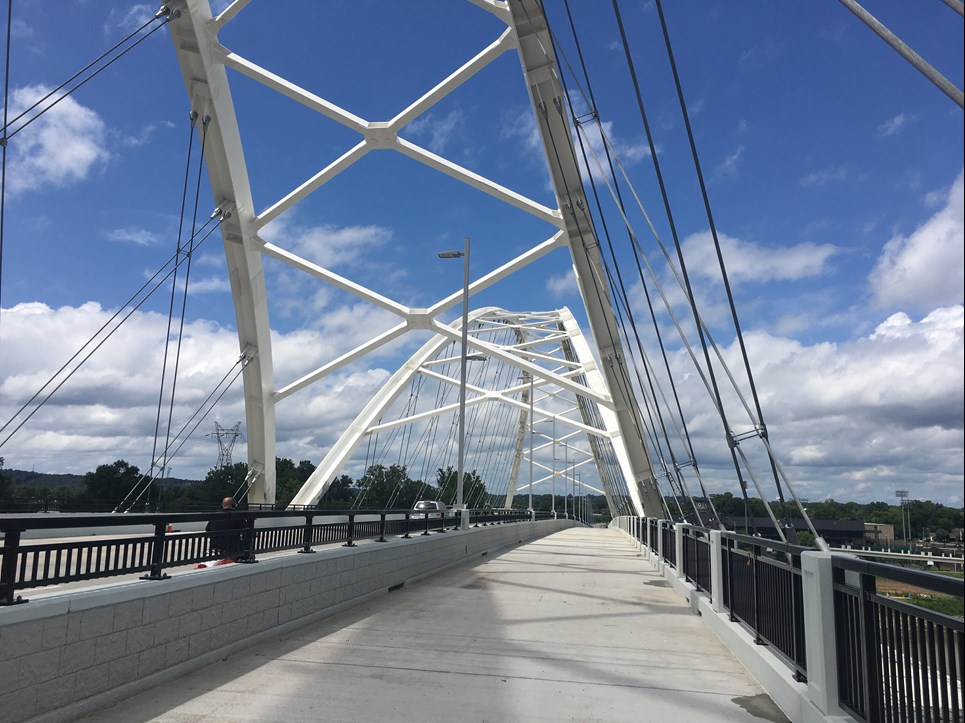
Figure 2. The facility is as beautiful as it is functional, giving the user the simultaneous feeling of being enclosed and protected from vehicular traffic and open to the beautiful panorama of the Arkansas River and Little Rock and North Little Rock skylines.
Benefits for Transportation
This attention to bicycle and pedestrian transportation modes is admirable and consistent with the Complete Streets Ordinance. It will have the specific benefit of allowing bicyclists and pedestrians from Little Rock to easily access Dickey-Stephens Ballpark. It will also provide the most direct means of crossing the Arkansas River for many bicycle and pedestrian commuters. The Junction Bridge (Fig. 17, orange circle) is an excellent recreational resource offering a picturesque view of Little Rock and North Little Rock, but its elevators make it primarily a pedestrian bridge and encourage recreation over transportation. The Clinton Presidential Bridge (Fig. 17, green circle) is an outstanding anchor for the Arkansas River Trail, but it is somewhat removed from the downtown Little Rock and North Little Rock areas. The Broadway Bridge BikePed path will be an important piece of making active transportation modes more viable for our region.
Benefits for Recreation/Tourists
The Broadway Bridge (Fig. 17, purple circle) will add a third dedicated bicyclist and pedestrian Arkansas River crossing in the downtown Little Rock and North Little Rock area. It will also provide a shorter loop (with Clinton Bridge and Broadway Bridge bookends) than the full 15.3 mile Arkansas River Trail Loop for recreational and tourist riders who aren't interested or aren't able to ride the entire loop.
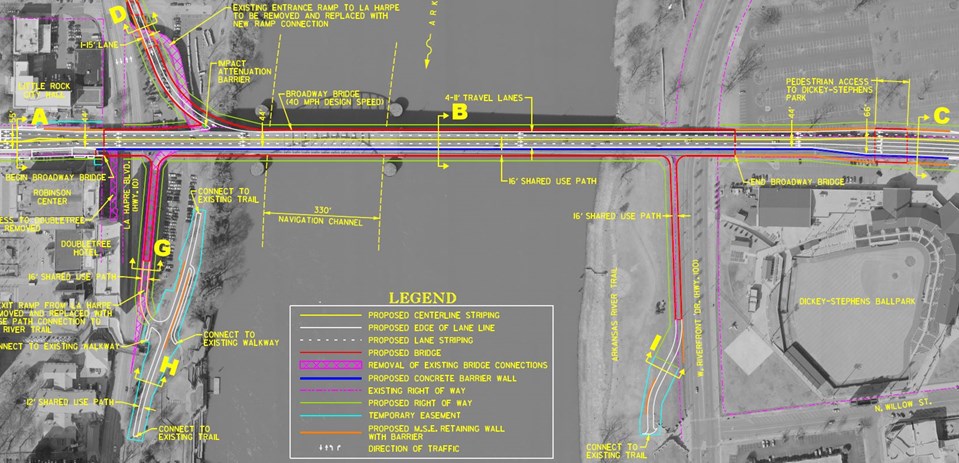
Figure 3. Aerial view of the Broadway Bridge design. Note the letters A-I. These indicate locations of cross section schematics in Figures 4-9.
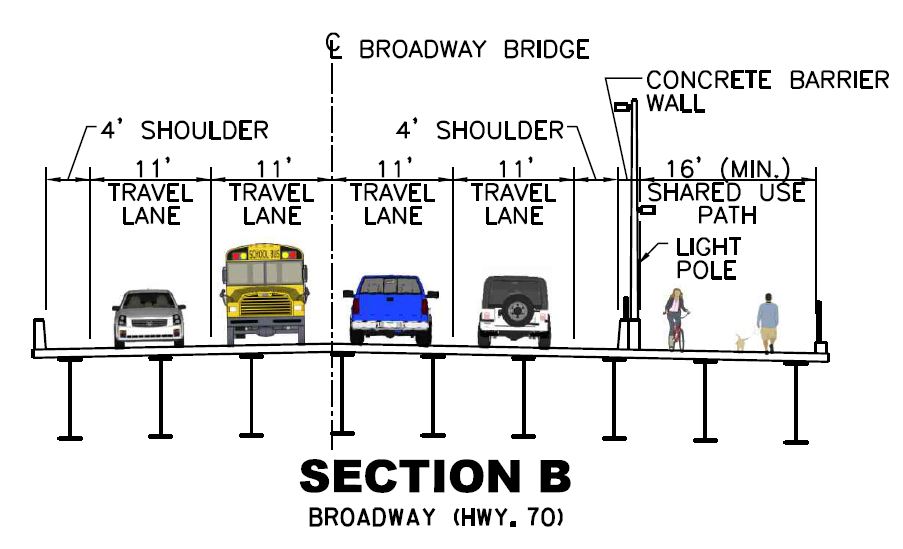
Figure 4. Cross Section B showing lane configurations on the Broadway Bridge itself. Note that the BikePed path is separated from vehicular traffic by a concrete barrier wall, decreasing user stress.
Little Rock Side
From the Little Rock side, the BikePed trail starts at the corner of Markham and Broadway, allowing bicyclists riding on the street and pedestrians walking on city sidewalks to access the bridge from there (Fig. 5, Cross Section A). Also from the Little Rock side, bicyclists and pedestrians using the Arkansas River Trail (Fig. 6, Cross Section H) will be able to access the Broadway Bridge from a dedicated entrance ramp (Fig. 7, Cross Section G).
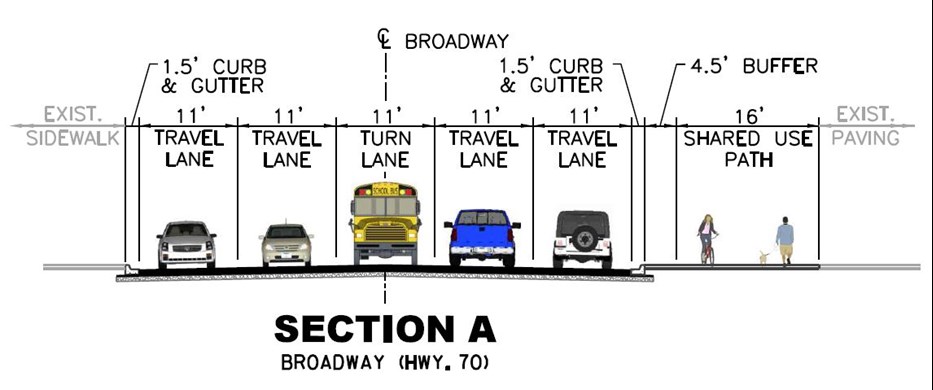
Figure 5. Cross Section A showing lane configurations near the corner of Markham and Broadway. Note that the path will be separated from vehicular traffic by a curb and a 4.5 foot buffer.
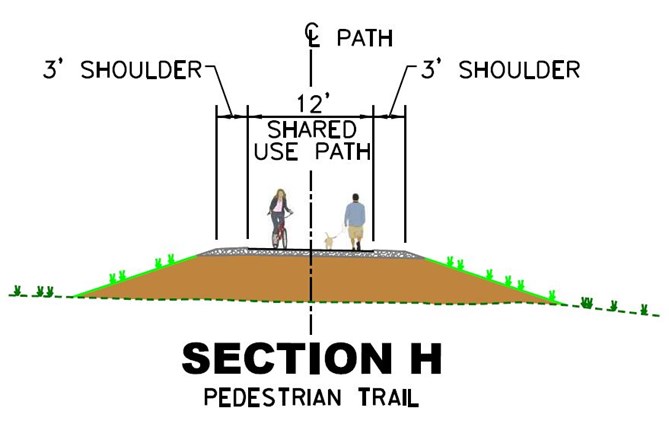
Figure 6. Cross Section H of the Arkansas River Trail.
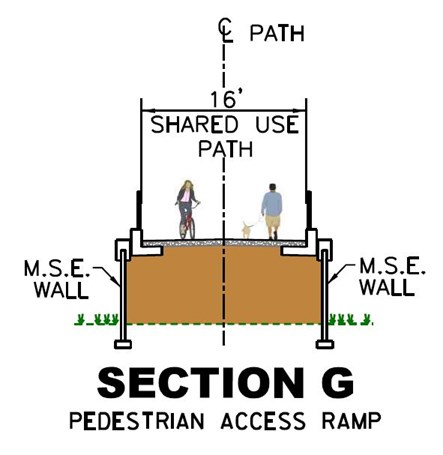
Figure 7. Cross Section G of the entrance ramp from the Arkansas River Trail to the Broadway Bridge on the Little Rock side (see also Figs. 10-16 below).
North Little Rock Side
From the North Little Rock side, the BikePed trail starts at the corner of N. Broadway and W. Broadway, allowing bicyclists riding on the street and pedestrians walking on sidewalks or coming from Dickey-Stephens Ballpark to access the bridge from there (Fig. 8, Cross Section C). Also from the North Little Rock side, bicyclists and pedestrians using the Arkansas River Trail will be able to access the Broadway Bridge from a dedicated entrance ramp (Fig. 9, Cross Section I) entering from a spur of the Arkansas River Trail that exits onto N. Willow St (Fig. 3).
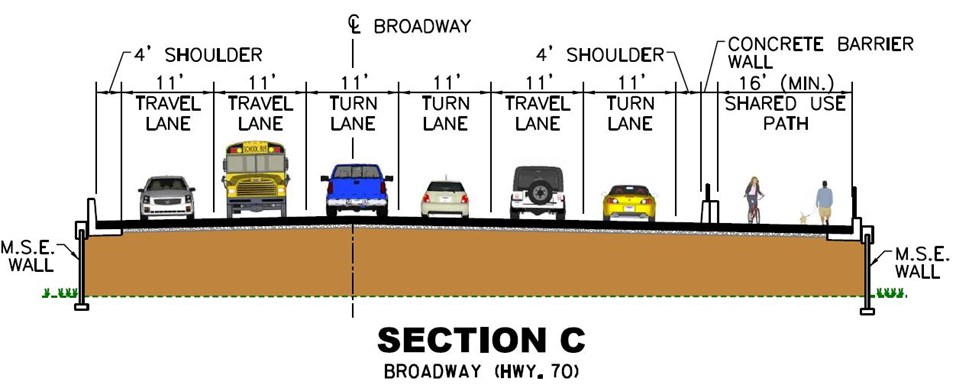
Figure 8. Cross Section C shows the lane configuration on the North Little Rock side close to the intersection of North Broadway and West Broadway. Note the concrete barrier wall between the BikePed Trail and vehicular traffic, reducing BikePed stress.
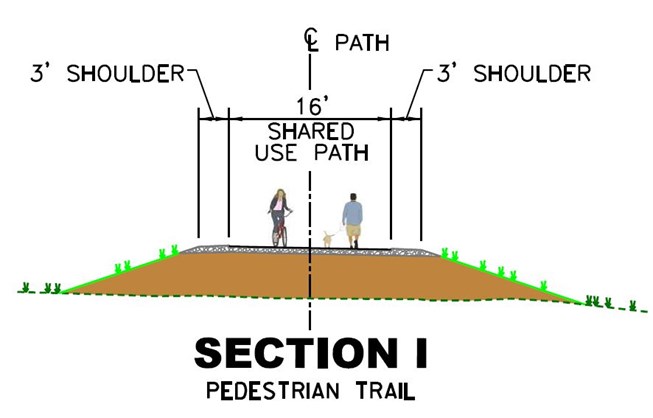
Figure 9. Cross Section I shows the trail width leading up to the entrance ramp from the Arkansas River Trail to the Broadway Bridge on the North Little Rock side.
Arkansas River Trail Junction
In addition to the facilities on the Broadway Bridge, Little Rock Parks and Recreation worked in conjunction with Arkansas Highway and Transportation Department to make an excellent BikePed junction with the Arkansas River Trail (Fig. 10).
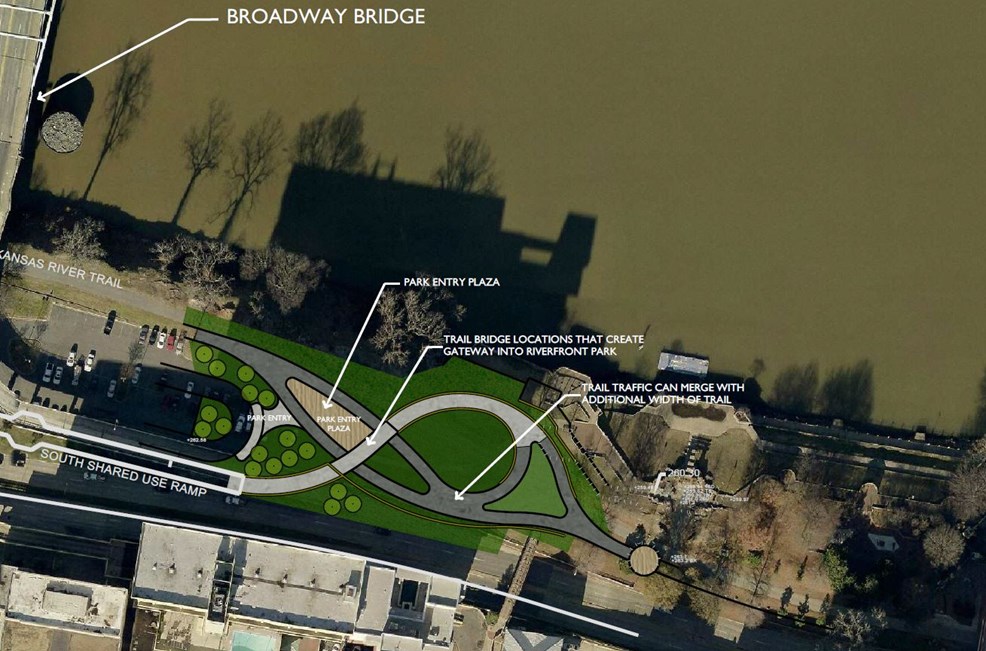
Figure 10. The BikePed facilities on the Broadway Bridge will have an outstanding junction with the Arkansas River Trail, increasing their future comfort and use (concept drawing from Little Rock Parks and Recreation).
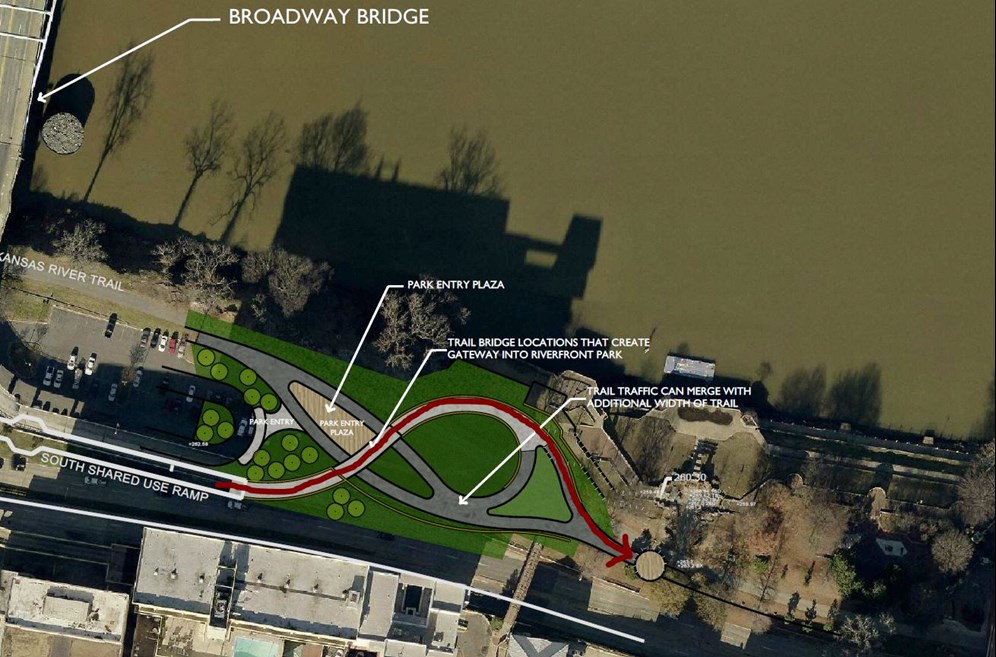
Figure 11. This is the route that a BikePed user will take coming from the bridge going east on the Arkansas River Trail. The user will travel over the Arkansas River Trail on a bridge then circle around to the Arkansas River Trail.
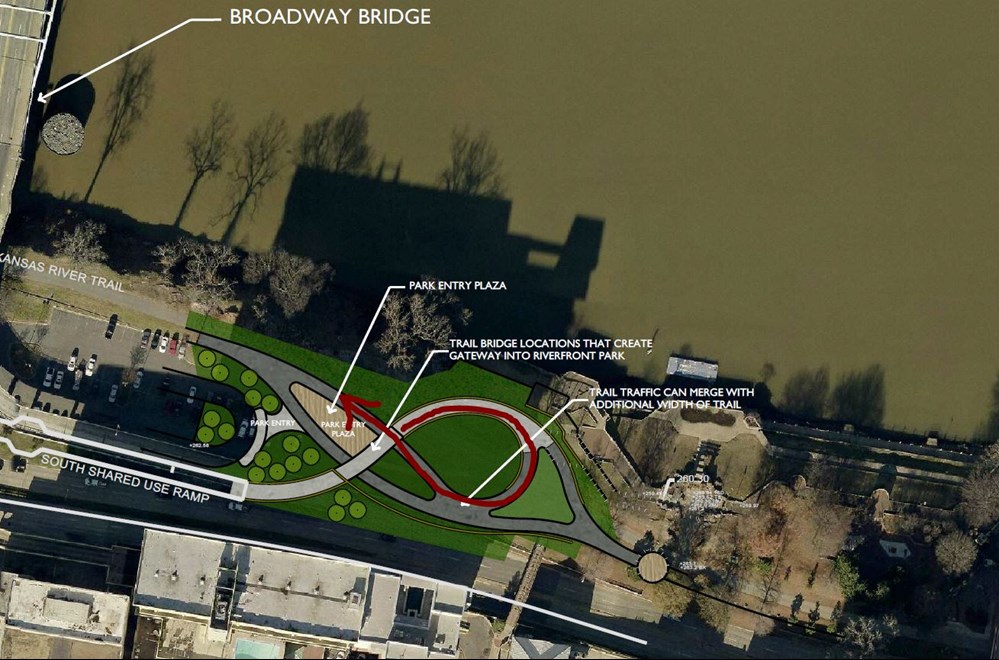
Figure 12. This is the route a user will take from the bridge going west on the Arkansas River Trail. The user will go over the trail then slow to make a tight turn onto the trail.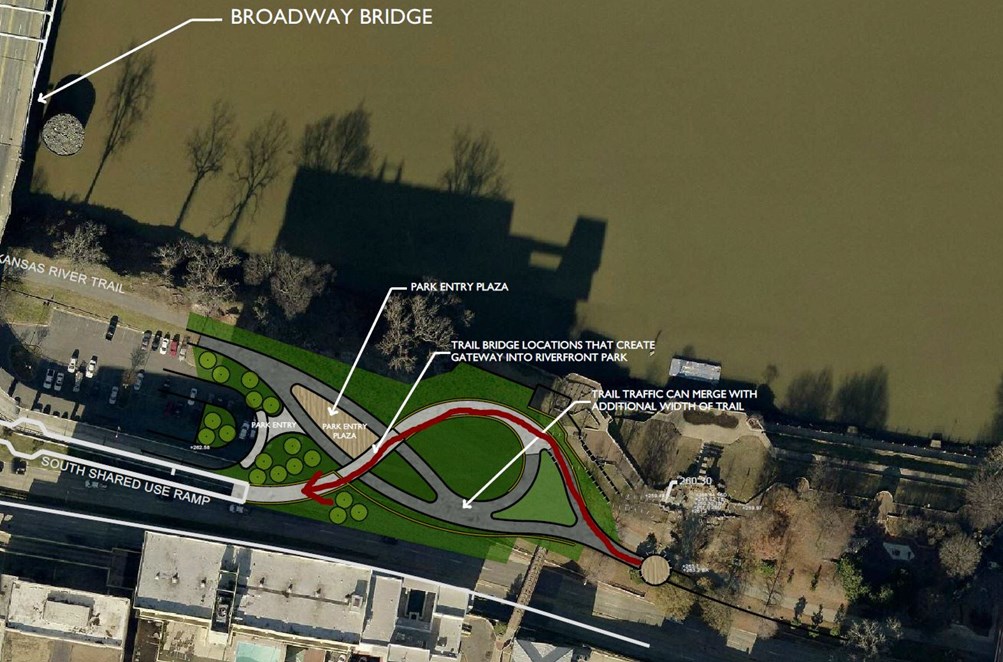
Figure 13. This is how a user will get onto the Broadway Bridge coming from the east on the Arkansas River Trail.
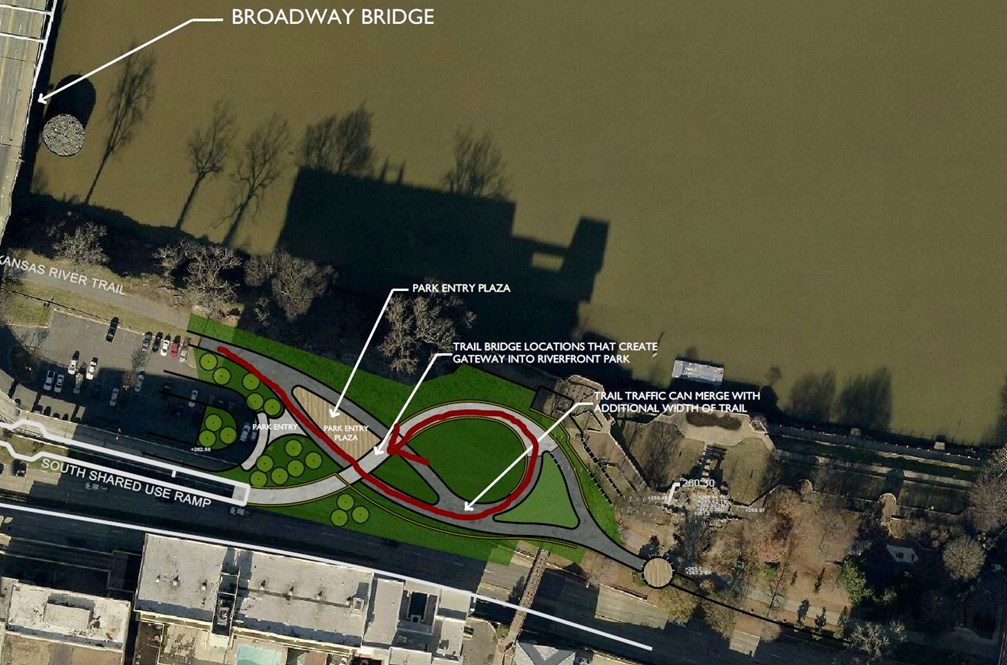
Figure 14. This is how a user will get onto the Broadway Bridge coming from the west on the Arkansas River Trail.
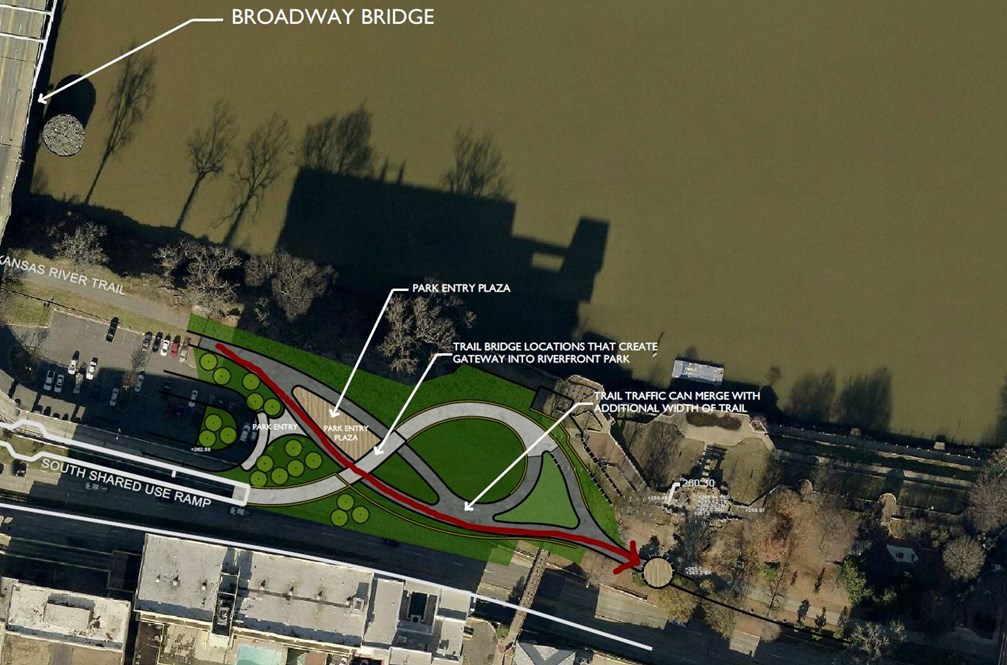
Figure 15. The Broadway Bridge junction should have minimal impact with Arkansas River Trail users not using the Broadway Bridge. This is the route a trail user will take to ride past the bridge intersection traveling east.
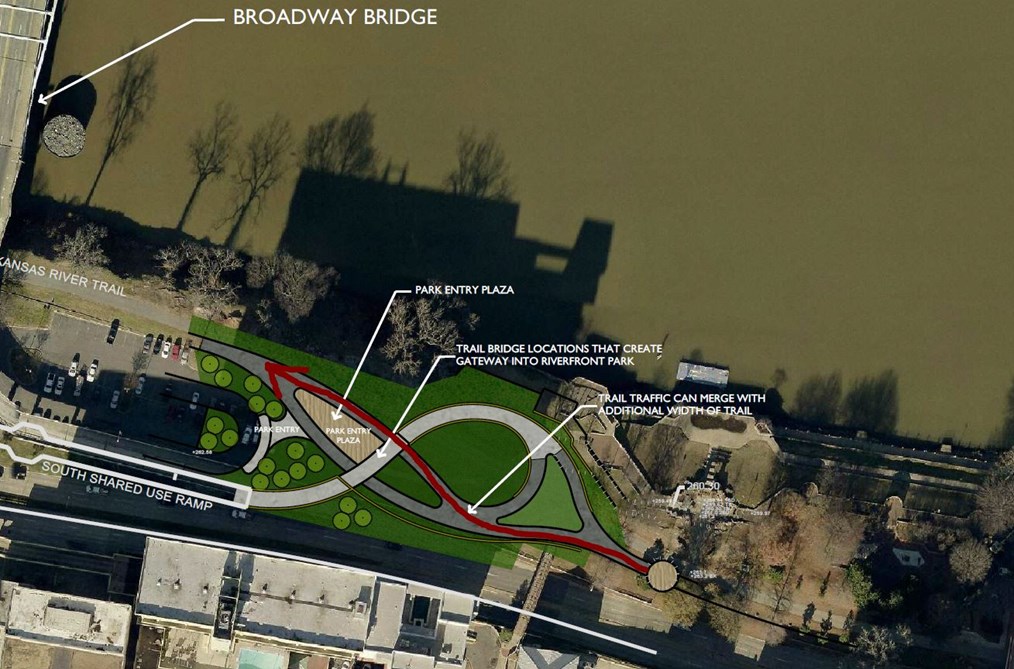
Figure 16. This is the route a trail user will take to ride past the bridge intersection traveling west.
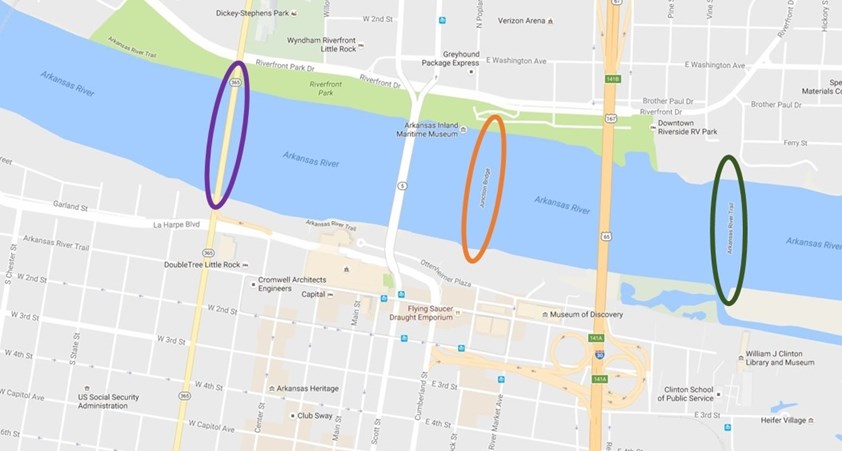
Figure 17. There are now three BikePed crossings over the Arkansas River in the downtown area, each adding a unique strength.
Outstanding work, Arkansas Highway and Transportation Department and Little Rock Parks and Recreation (http://www.arkansashighways.com/)!




 Trash & Recycling
Trash & Recycling
 Online Payments
Online Payments
 City Documents
City Documents
 Parks
Parks
 Traffic Court
Traffic Court
 E-NEWS
E-NEWS
 EXPLORE
EXPLORE
 NEWS
NEWS
 TRANSLATE
TRANSLATE
